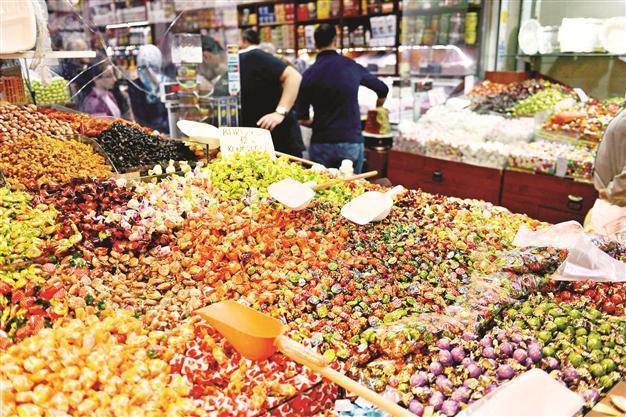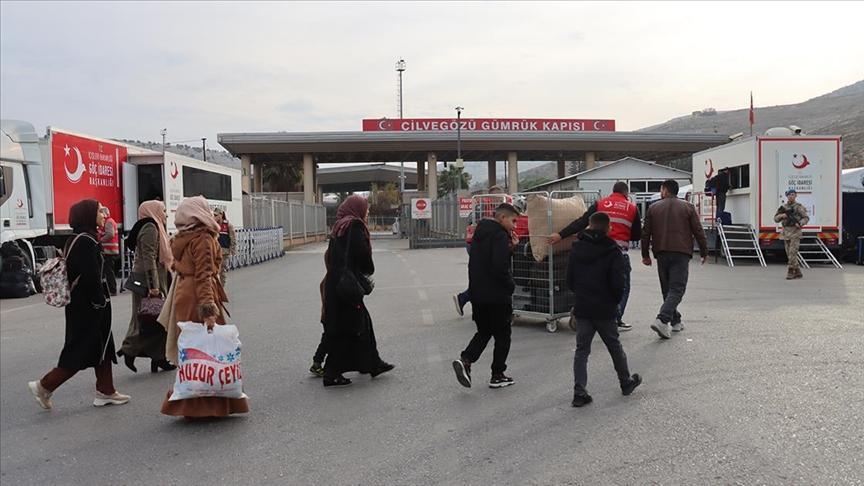This year’s ‘bayram’ blues
BELGİN AKALTAN

Let’s eat sweet, talk sweet, as Turkish proverb goes. Chocolate, sweets go with bayram. AA photo
By the time you read this article, it is the third or fourth day of Eid al-Adha, or the Feast of Sacrifice, depending on where you are in the world or depending on when you buy our paper. This bayram (holiday) has one name, in contrast with the previous one, which was named “Şeker Bayramı” (Sugar Feast) all my life but was changed into the “Ramadan Feast” in recent years. It takes some time to adapt. It’s always “Şeker Bayramı” to me. I’m a sweet person.The Eid al-Adha (what a strange Arabic name I need to use to please our English-language copyeditors. [We use the original Arabic versions as a principle.])
Anyway, this one is the Feast of Sacrifice when Muslims slaughter animals. Those Muslims who can afford to sacrifice their best halal domestic animals (usually a cow, but can also be a camel, goat, sheep or ram depending on the region) as a symbol of Abraham’s willingness to sacrifice his only son.
And now you will ask me if I slaughtered an animal as a sacrifice this bayram? I’d rather slaughter you.
No, I will not and nobody in my family has or will slaughter an animal. However, in line with the theme of giving, I will donate the equivalent amount of money to LÖSEV, the Foundation for Children with Leukemia, and the Association for the Support of Contemporary Living (ÇYDD). Not to Deniz Feneri (Lighthouse).
I like the meat though. It took me long years to learn how to cook the “kurban,” the sacrificed animal’s meat, but when done properly, it’s delicious. The simplest recipe would be – I learned it by coincidence, after years of wasting the meat sent by neighbors, through one of the gourmet columns in daily Hürriyet. Its original name is “Çoban Kavurma” if you want to be on the safe side and look it up on the web. Cut the meat into small pieces, do not add water or oil, put dill and the green parts of spring onions in and let it simmer on a very low flame for a few hours. Of course, check and stir frequently, then put salt and pepper. The meat becomes as soft as “lokum” (Turkish delight).
Many of my international friends who have not been to Turkey ask me what we do on religious holidays. Some of them have been to Arab countries and/or to Central Asian countries and they somehow sense Turkey has to be something different. The fact that they know me is one factor.
Well, for starters, we put on good clothes. Our best. The children are bought new shoes and new clothes. The grown-ups put on their best if not new clothes. With new clothes, there comes some cleanliness also. I guess some people do their monthly washing up. It is one of those times when the chance of coming across that intense smell of sweat is less frequent than other times. It must be the effect of new clothes; some people remember to wash before putting them on.
There may or may not be family meals. I mean my mother did not make them. But I have seen in other families that the eldest person in the family cooks a large meal for the children and grandchildren. I guess that “custom” depends how much tolerance the female part of the family has to being exploited even on a holiday. Not my family.
The best part of a bayram in Turkey is that small amounts – or bigger amounts, depending on the age of the child and the skill to bargain – of money are given to children. Eligibility is questionable here. My late uncle put some money on the top of the refrigerator even after I was married. When I protested, he said my elder brother was still extorting money from him. He’d stop giving me a “bayram allowance” when I had children of my own. Then he started giving money to our child.
You may or may not give money or even open the door to neighbor kids ringing the doorbell at 7:30 a.m. You visit the graves of your dead ones. You visit elderly family members who have not died yet.
Or you buy a ticket to Bodrum and do none of these.











